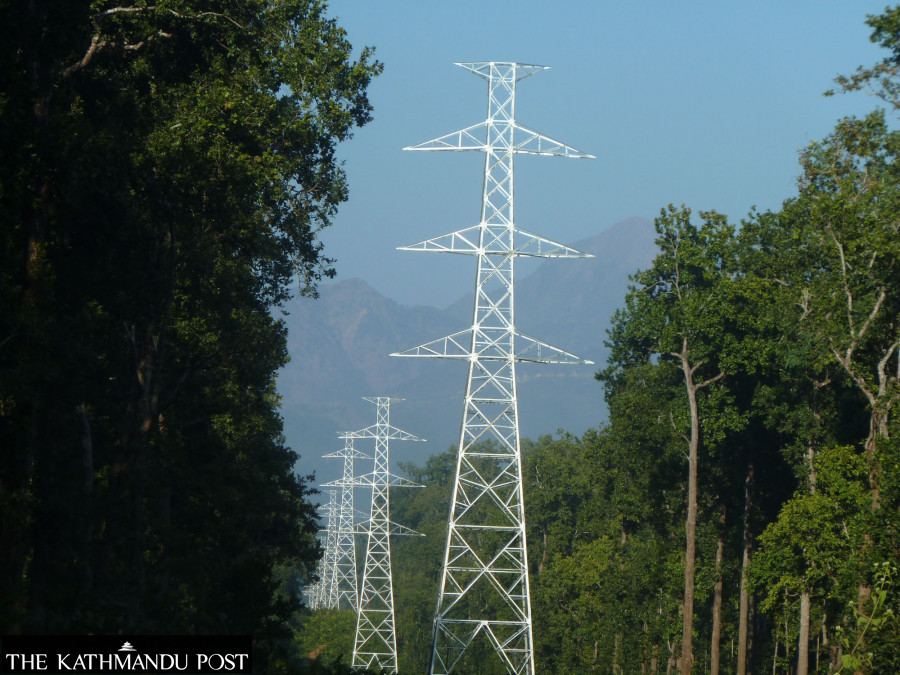
With generation by Nepal’s hydropower projects falling, the Nepal Electricity Authority’s export of electricity to India has also dipped.
On Monday, the NEA exported 230MW to the southern neighbour, although Nepal is authorised to sell over 400MW of electricity in the Indian market. Recently, the NEA started exporting the power generated also by the Chilime (22.1MW) and Solukhola (23.5MW) hydropower projects.
The total installed capacity of hydropower projects in Nepal is over 2,200MW, according to the NEA. But, the state-owned power utility said that available output at the moment is around 1,550MW as projects’ output fluctuates depending on water levels of rivers and production dips to the lowest especially during winter. Domestic peak demands of the electricity on Monday stood at 1,418MW.
Nepal’s hydropower projects are mostly run-of-the-river type and they cannot produce power to their optimum capacity when water level in the rivers decreases. For example, the 456MW Upper Tamakoshi Hydropower Project has been producing just 200MW, according to NEA spokesman Suresh Bahadur Bhattarai.
“As the output has already started to decline, we cannot export power to the quantity that Nepal has been authorised to export to its southern neighbour ,” Bhattarai said.
The country’s only storage-type project is Kulekhani whose three projects produce a total of 106MW. The 140MW Tanahun Hydropower Project is another storage type project, which is under construction.
The planned 1200MW Budhi Gandaki Hydropower Project is a reservoir-based plant whose development is expected to address electricity shortfalls in the winter in the long term. But, there is a long way to go before its construction commences.
However, more run-of-the-river-type projects coming online in the next few years are expected to address the shortfall of power even in the winter because power will be added to the grid even for the dry season which starts in December lasting till May.
But as per its agreement with India, the NEA has to export power in the wet season (June-November). For this the state-owned power utility has been seeking permission from Indian authorities to export power generated by more hydropower projects besides the current eight projects.
Currently, the NEA has been selling 37.7MW from the Trishuli and Devighat hydropower projects; 140MW from Kaligandaki Hydropower Project; 68MW from Middle Marsyangdi; 67MW from Marsyangdi; 51MW from Likhu-4; 22.1 MW from Chilime; and 23.5 MW from Solukhola hydropower projects.
Likewise, the NEA is still awaiting the approval from the southern neighbour for exporting power from other projects including Mistrikhola, Likhu Khola-A, Likhukhola, Kabeli B1, Maikhola, Hewa Khola A and Lower Modi hydropower projects whose combined capacity is around 170MW.
Starting from the rainy season until a few days ago, the NEA was facing spillage of power especially at night when domestic power consumption slumps. As a result, it failed to earn as much as it wanted through exports.












